|







| |
Relocation Camps in World
War II

Pearl Harbor was attacked on December 7th, 1941. On the following day, America declared
war on Japan. However, fighting with Japan presented worries for many Americans of
non-Japanese ancestry. They feared that the
Japanese-Americans would help Japan in the war. These fears were very ill-founded, almost
to the point of being comical. For example, some people thought that the
Japanese-Americans would grow strawberry field in a way to make a giant arrow.
This arrow would be visible by
Japanese planes, and would direct them to such important locations as power stations and
government buildings. Not one Japanese plane made successfully made it to American in
actuality.
The non-Japanese Americans saw only
conspiracy in the Issei and Nisei, a conspiracy based on racial prejudice.
As a result of some people's fears, the FBI and local authorities began detaining Issei
leaders of the Japanese-American communities in Hawai'i and the mainland.
No formal charges were made, and there was
no due process of law. The critical point came when President Roosevelt signed Executive
Order 9066.
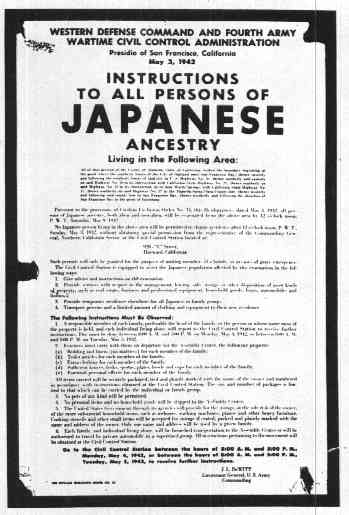
@
This allowed the military to remove any group from an area
without a reason. Executive Order 9066 provided the legal authority for the mass
imprisonment of Japanese-Americans.
Although there were some willful reallocations, the vast majority of people were
forced into Concentration Camps (now refereed to as Relocation Camps.)
Not only was this a violation of civil rights, but they were forced to sell their
property (at just a fraction of it worth), and most importantly they were robbed of their
dignity.
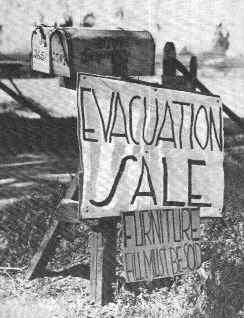
@
Still, most Japanese-Americans went peacefully to prove
their devotion to America.
The Japanese-Americans on Terminal Island near Los Angeles were ordered to leave
their homes on February 25, 1942. By April, Civilian Exclusion Orders became common, and
Japanese-Americans up and down the West Coast were herded into Assembly centers.
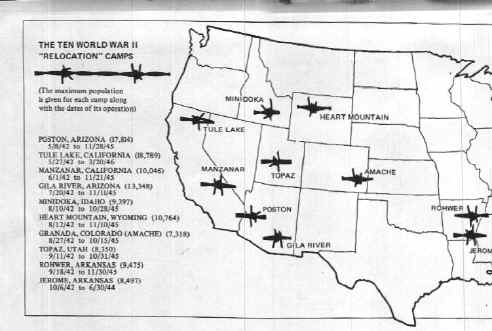 @
@
Here they were detained until taken to one of ten Concentration Camps:
Gila River (Arizona)
Poston (Arizona)
Jerome (Arkansas)
Rohwer (Arkansas)
Manzanar (California)
Tule Lake (California)
Amache (Colorado)
Minidoka (Idaho)
Topaz (Utah)
Heart Mountain (Wyoming.)
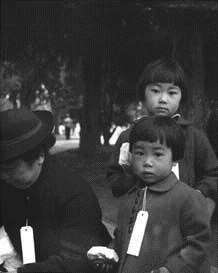
A total of 110,000 persons of
Japanese ancestry (70,000 of whom were native-born American citizens) were incarcerated
and forced into Concentration Camps. More than 2,200 ethnic Japanese in 13 Latin American
countries were taken from their homes and put into camps as well.
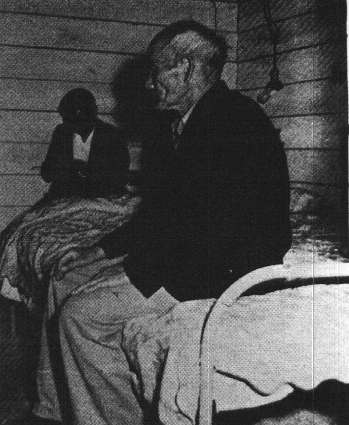 It is
ironic that the Japanese-Americans were incarcerated because the government feared they
were loyal to Japan, but they submitted to the indignity because they were loyal to
America.
It is
ironic that the Japanese-Americans were incarcerated because the government feared they
were loyal to Japan, but they submitted to the indignity because they were loyal to
America.
These camps were under the authority
of the War Relocation Authority (WRA.) Even though the WRA tried to make the camps seem
like normal life, guard towers, barbed wire, and inhospitable locations such as deserts
and swamps made the camps unpleasant. They were overcrowded and detestable.
In Hawaii, however, the Japanese-Americans
could not be put in Concentration Camps. Most of the statefs economy depended on them.
Curfew laws were created, and several leaders were incarcerated, but their treatment was
much better than on the mainland.
President Truman signs the Japanese
American Evacuation Claims Act on July 2, 1948. This was designed to compensate
Japanese-Americans for economic losses due to forced evacuations.
Although $38 million was to be paid, very little of it
actually reached the victims. Not until President Regan signed HR 442 was there any
serious compensation.
A fund was established to pay $20,000 to Japanese-Americans
who were forced into camps or had property seized. The Latin Americans of Japanese were
not compensated until 1999. Only 375 to 400 former internees will receive the $5,000.
Though very few people fell that the money justifies what
happened, most find these settlements acceptable. gYou canft relive the life again, so
you have to go on,h said Kazuo Matsubayahi, a former internee, now 62.
Japanese-Americans for economic losses due to forced
evacuations. Although $38 million was to be paid, very little of it actually reached the
victims. Not until President Regan signed HR 442 was there any serious compensation.
D.R. |
@
@
@
@
@
|


![]()